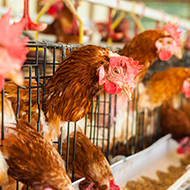Bats ‘surf’ storm fronts during migration, study finds
Researchers used ultra-lightweight intelligent sensors to monitor the bats' flight patterns.
Researchers from the Max Planck Institute of Animal Behaviour (MPI-AB) have uncovered new insights into the long haul migration of bats across continents.
New research has revealed that common noctule bats have been ‘surfing’ warm storm fronts to help them conserve energy when travelling long distances.
The migration of bats is difficult for researchers to observe, meaning that the way that they travel long distances had not been discovered.
To help researchers to better understand the movements of common noctule bats, engineers from MPI-AB developed ultra-lightweight intelligent sensors. These tags weigh only five per cent of the bat’s total body mass and can record its activity levels as well as the temperature of the surrounding air.
Every spring for three years, sensors were attached to 71 female common noctule bats, which are more migratory than male bats, ahead of their migration across Europe.
When tracking animals, researchers would normally need to find the animals and stay close enough to them to download the data. However, the new tag was able to compress the data, consisting of 1440 daily measurements, into a 12-byte message over a long-range network.
The data revealed that, when travelling back northeast, female noctule bats took a different trajectory route than previously thought.
“There is no migration corridor,” said senior author Dina Dechmann, from MPI-AB.
“We had assumed that bats were following a unified path, but we now see they are moving all over the landscape in a general northeast direction.”
Further examination of the data also found that the bats were able to migrate almost 400km in a single night, breaking known records for the species. They were also observed to alternate their flight patterns with frequent stops, which is likely to be due to their need to feed continuously.
Researchers observed a pattern of waves of migration, which they believe can be explained with changes in the weather.
Bats would often set off on migration flights when the air pressure dropped and the temperature spiked, ahead of incoming storms. Combining this data with activity sensors, the researchers suggest that bats are using these storm fronts to travel far distances while using less energy.
Edward Hurme, first author and a post-doctoral researcher at MPI-AB, said: “They were riding storm fronts, using the support of warm tailwinds,
“It was known that birds use wind support during migration, and now we see that bats do too,”
The full study can be found in the journal Science.
Image © Shutterstock



 An Avian Influenza Prevention Zone (AIPZ) has been introduced across Wales.
An Avian Influenza Prevention Zone (AIPZ) has been introduced across Wales.